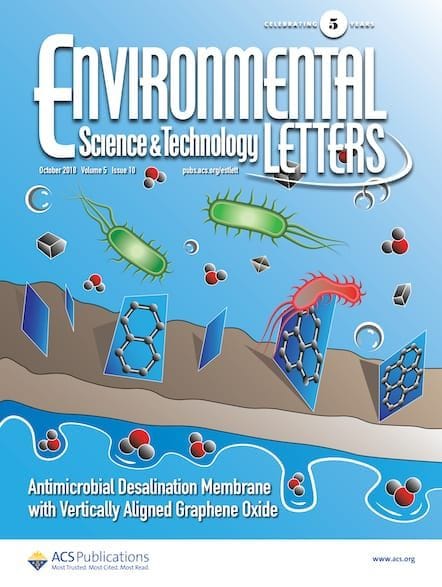Your smartwatch is a convenient way to gamify and monitor your health. But could it also be causing you harm? New research explores the presence of PFAS in smartwatch wristbands.

Per- and polyfluoroalkyl substances (PFAS) are a class of more than 9,000 anthropogenic chemicals with many applications. They are highly persistent in the environment, and some are bio-accumulative and toxic. We know that they can travel long distances, in the air and by sea, polluting even the most remote areas of the planet. Many arise from industrial processes, but they are also found in consumer goods, including clothing, cosmetics, and textiles—even menstrual products—where they perform functions such as durability and stain or water resistance. Yet despite their known toxicity, there are few regulatory requirements for reporting PFAS use, and even when thresholds exist, samples often exceed recommended limits.
The use of PFAS in consumer products creates various routes of exposure, including ingestion and inhalation—but absorption through the skin is also proving to be key. With increasing demand for thinner, smaller, softer, and more stretchable materials for our wearable tech, PFAS have once again been thrust into the spotlight. In 2019, more than 1 in 5 Americans wore a smartwatch or fitness tracker, and a 2020 study found that people wore these devices for a median of 11.2 hours per day,1,2 representing significant exposure and the potential for dermal absorption of chemicals in the wristband.
New findings from a group working at the University of Notre Dame have shed more light on the presence of PFAS in the wristbands of wearable devices.3 The research, published in Environmental Science & Technology Letters, focuses specifically on fluoroelastomers, a PFAS subclass used in the manufacture of synthetic rubbers. These fluoroelastomers are used because they are resistant to chemical or thermal degradation, helping to retain color as well as ensure that consumer materials can cope with sweat, skin oils, and the chemicals in sunscreens or lotion.4
To explore their presence in wearables, 22 watch bands from various brands were screened for fluorine using particle-induced gamma-ray emission spectroscopy before being subjected to extraction and liquid chromatography-tandem mass spectrometry for targeted analysis of 20 analytes. Finally, a subset of samples were assayed to look for PFAS precursors. Results showed that of the 13 bands advertised as containing fluoroelastomers, all had fluorine on their surface, with values ranging from 29–91%. To put this in context, PFAS in the textiles used as firefighter turnout gear described high levels of total fluorine as being “up to 2%”.5

Presence of Perfluorohexanoic Acid in Fluoroelastomer Watch Bands
DOI: 10.1021/acs.estlett.4c00907
Interestingly, fluoroelastomers were more often found in the more expensive bands, presumably due to the increased manufacturing costs. Spectrometry data showed that Perfluorohexanoic acid (PFHxA) was the most commonly detected compound, which the authors hypothesize could be due to this being a residual surfactant from the emulsion polymerization process of fluoroelastomers. In 2023, the U.S. Environmental Protection Agency released a finalized Integrated Risk Information System (IRIS) human health assessment on the toxicity of PFHxA and identified likely hepatic, developmental, hematopoietic, and endocrine effects in humans exposed to this chemical.6
PFAS can be difficult to measure in biological systems because analysis traditionally involves tissue isolation and digestion before extraction of the compounds.7 But taken alongside recent reports demonstrating that more than 50% of PFHxA exposure is from dermal absorbtion,8 the new research suggests that our watch bands may represent a significant exposure route, and one that could be bad for our health.
Previous work from the same team has looked at directly fluorinated containers as a source of perfluoroalkyl carboxylic acids.9 These containers are used for food packaging, pesticides, household cleaners, and personal care products. Leaching experiments showed a subset of samples generated significant PFAS concentrations, with estimates for their release into food ranging from 0.77 to 2.68 ng per kilogram of bodyweight per week—confirming that ingestion of food stored in these containers could be a significant source of exposure.
These observations about PFAS levels and their migration reinforce the need for regulations, emphasizing the importance of further research to understand the fate of these forever chemicals when materials are disposed or recycled.
References:
- Vogels, E. A. About one-in-five Americans use a smart watch or fitness tracker. Pew Research Center.
- Beukenhorst, A. L. et al. Collecting Symptoms and Sensor Data with Consumer Smartwatches (the Knee Osteoarthritis, Linking Activity and Pain Study): Protocol for a Longitudinal, Observational Feasibility Study. JMIR Res. Protoc 2019, 8 (1), e10238.
- Wicks, A. et al. Presence of Perfluorohexanoic Acid in Fluoroelastomer Watch Bands. Environ. Sci. Technol. Lett. 2025, 12, 1, 25–30.
- VitonTM Fluoroelastomers for Consumer Electronics. The Chemours Company 2025. https://www.chemours.com.
- Peaslee, G. F. et al. Another Pathway for Firefighter Exposure to Per- and Polyfluoroalkyl Substances: Firefighter Textiles. Environ. Sci. Technol. Lett. 2020, 7, 8, 594–599.
- Toxicological Review of Perfluorohexanoic Acid (PFHxA) and Related Salts (Final Report, 2023). Integrated Risk Information System, United States Environmental Protection Agency. https://www.epa.gov/iris.
- Bartels, J. L. et al. Radiosynthesis and Biological Distribution of 18F-Labeled Perfluorinated Alkyl Substances. Environ. Sci. Technol. Lett. 2017, 4, 6, 211–215.
- Ragnarsdóttir, O. et al. Dermal Bioavailability of Perfluoroalkyl Substances Using in Vitro 3D Human Skin Equivalent Models. Environ. Int. 2024, 188, 108772.
- Whitehead, H. and Peaslee, G. F. Directly Fluorinated Containers as a Source of Perfluoroalkyl Carboxylic Acids. Environ. Sci. Technol. Lett. 2023, 10, 4, 350–355.
